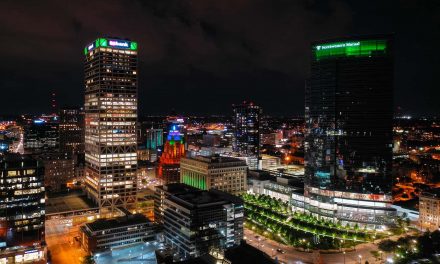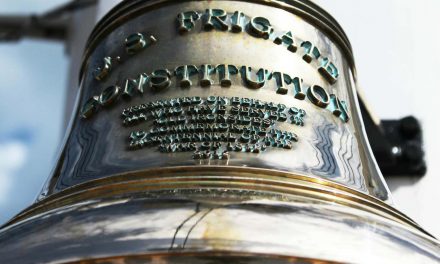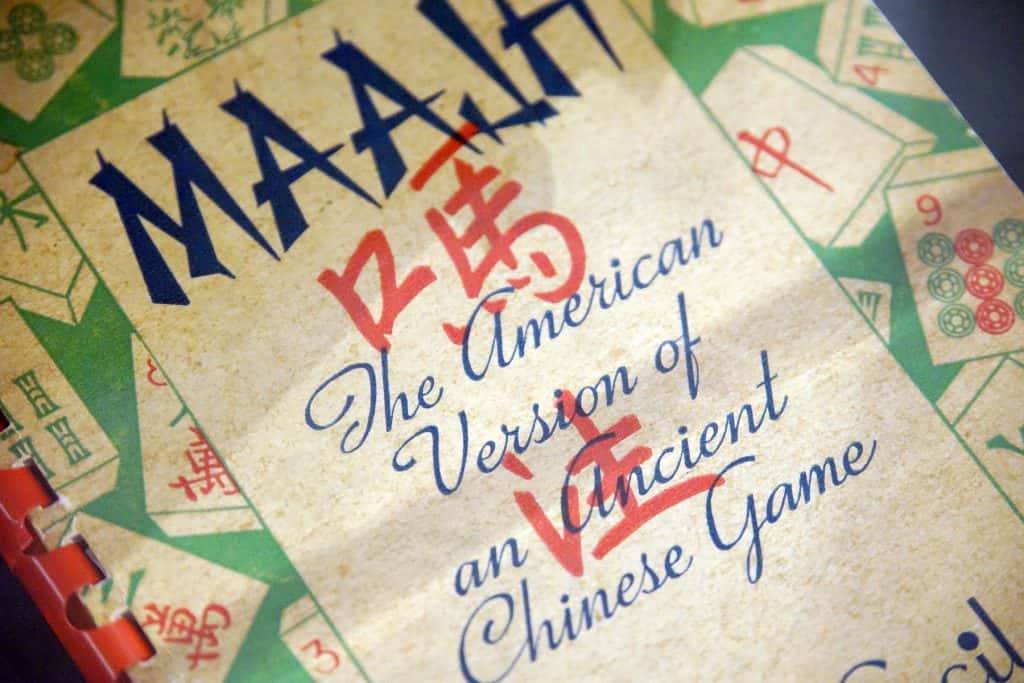
One of the missions of the Milwaukee County Historical Society (MCHS) is to serve as a repository of local memories, by preserving documents and artifacts. Included in the vast historical collection are the personal stories from Korean War veterans.
The correspondences of John S. Murlaschitz and photos of Bruce J. Kremer offer two very different glimpses into the lives of soldiers during and just after “The Forgotten War.”
FROM MILWAUKEE TO KOREA
Murlaschitz and Kremer were both young men from Milwaukee, but were drawn into the Korean War under different circumstances. Murlaschitz, an infantryman, found himself in the thick of the conflict, while Kremer, drafted in 1954, arrived in Korea after the armistice.
Murlaschitz’s service was marked by intense combat. He was wounded in action in September 1950 and returned to duty shortly after, only to be declared missing in action by November. His family endured a year of uncertainty until a telegram informed them he was a prisoner of war in North Korea.
In contrast, Kremer’s journey began with basic training at Fort Leonard Wood, Missouri, followed by a 21-day voyage across the Pacific, ending in his assignment to the United States Military Advisory Group to the Republic of Korea Army (KMAG).
CAPTIVITY AND COURAGE
Murlaschitz’s letters from Camp 3 in Ch’ang-Song, under Chinese control, revealed a soldier’s resilience in the face of adversity. Despite the harsh conditions, what he wrote to his family was filled with concern for their well-being and mundane queries about home life, such as whether they had purchased a television set. The letters, written under the watchful eyes of his captors, often reassured his mother of his good spirits, though it was unclear how much of his condition was genuine and how much was coerced.
His correspondences painted a picture of the psychological toll of captivity, where prisoners were subjected to indoctrination sessions that many considered brainwashing. Yet, Murlaschitz’s enduring hope and connection to his family provided a lifeline, evident in his repeated reminders for his mother not to send money as there was no use for it in captivity. His letters from Camp 3, often stamped with postmarks in Hangul and addressed via the “Chinese Committee of World Peace in Peking,” showed the surreal mix of personal connection and geopolitical conflict.
In one letter dated May 26, 1953, Murlaschitz wrote:
Dear Mother and Frank,
Just got your letter you wrote on the 20th of March and was very happy to get it. It was the first one I got from home. As for me I’m getting along fine and hope you are doing the same. And Frank, tell Mother that I’ll be home as soon as I can get out of this mess. And whatever you do don’t send me any money. Because in a place like this I have no need for it and anyway there is no place to spend it. I’ve written more than one letter home and to Emma in fact it was about 5 or 6. Well if I ever do get home I don’t want any rice to eat we get our full here. Well if you see Emma said hello for me and Tony too. Said hi to Bob and the rest of them. Said I got the card Bob sent and I wish you would tell him to write one. Well, tell Mother not to worry about me, and let’s hope this gets over with in a hurry.
As always,
Johnny, North Korea P.O.W. Camp #3
POST-WAR REFLECTIONS
While Murlaschitz’s letters documented the war’s immediate impact, Kremer’s color slides provided a visual record of the war’s aftermath. Upon arrival in South Korea, Kremer was assigned to KMAG in Daegu, later moving to Seoul where he served as a secretary to a general.
Kremer documented a landscape scarred by war but slowly recovering. His photographs of Seoul depicted a landscape still struggling to recover, juxtaposed with moments of everyday life and glimpses of beauty.
“Seoul and the rest of the country was in ruins. In Seoul, there were only two buildings left standing undamaged by the war. One was an old temple and the other was a downtown hotel. The capital building itself and everything else was in ruins.”
Kremer’s narrative, preserved in his personal reflections written from 1985 and 1986, detailed his experiences in Korea as a witness of the rebuilding efforts, and the fortitude of the Korean people. He spent part of 1954, all of 1955, and part of 1956 in South Korea, getting back home during the summer of 1956.
HISTORICAL NARRATIVES
The intertwining stories of Murlaschitz and Kremer provide a unique view of the Korean War experience with Milwaukee roots. Murlaschitz’s letters offered an intimate look at a soldier’s psychological endurance, while Kremer’s photographs documented the broader context of recovery and consequences of war.
MCHS Archivist Steve Schaffer underscored the importance of such first-hand documents for filling the gaps in the public’s memory about the Korean War. He talked about often feeling dismayed at how the Korean War had been forgotten in the American consciousness. That was why he wanted MCHS to acquire and display more materials that represented the time. Personal artifacts offer a richer insight into history.
“We have next to nothing on the Korean conflict in our collection, and it has always been a personal interest of mine,” said Schaffer. “Kremer’s slides are slice-of-life shots of Seoul in 1954-55, and then some that are related to the military. They are stunning and beautiful, and those types of images in color are very rare.”
ENDURING LEGACIES
Murlaschitz’s story concluded with his release in August 1953, after thirty-two months as a POW. His final letter, joyfully announcing his freedom, marked the end of a harrowing chapter in his life. Attempts to trace his later life revealed that he lived between Waupaca and Milwaukee, but little else was known. His letters remain as a witness to his hope during a very dark time.
Kremer’s legacy, captured in his photographs, offered a visual reference to the enduring spirit of those who lived through the war. His images have allowed future generations to share a glimpse into a pivotal period in history, ensuring that the sacrifices and experiences of soldiers like Murlaschitz and Kremer were not forgotten.
MI Staff (Korea)
Bruce J. Kremer
This updated article was based on two previously published features by Milwaukee Independent:
- Exploring Korea: Stories from Milwaukee to the DMZ and across a divided peninsula
- A pawn of history: How the Great Power struggle to control Korea set the stage for its civil war
- Names for Korea: The evolution of English words used for its identity from Gojoseon to Daehan Minguk
- SeonJoo So Oh: Living her dream of creating a "folded paper" bridge between Milwaukee and Korean culture
- A Cultural Bridge: Why Milwaukee needs to invest in a Museum that celebrates Korean art and history
- Korean diplomat joins Milwaukee's Korean American community in celebration of 79th Liberation Day
- John T. Chisholm: Standing guard along the volatile Korean DMZ at the end of the Cold War
- Most Dangerous Game: The golf course where U.S. soldiers play surrounded by North Korean snipers
- Triumph and Tragedy: How the 1988 Seoul Olympics became a battleground for Cold War politics
- Dan Odya: The challenges of serving at the Korean Demilitarized Zone during the Vietnam War
- The Korean Demilitarized Zone: A border between peace and war that also cuts across hearts and history
- The Korean DMZ Conflict: A forgotten "Second Chapter" of America's "Forgotten War"
- Dick Cavalco: A life shaped by service but also silence for 65 years about the Korean War
- Overshadowed by conflict: Why the Korean War still struggles for recognition and remembrance
- Wisconsin's Korean War Memorial stands as a timeless tribute to a generation of "forgotten" veterans
- Glenn Dohrmann: The extraordinary journey from an orphaned farm boy to a highly decorated hero
- The fight for Hill 266: Glenn Dohrmann recalls one of the Korean War's most fierce battles
- Frozen in time: Rare photos from a side of the Korean War that most families in Milwaukee never saw
- Jessica Boling: The emotional journey from an American adoption to reclaiming her Korean identity
- A deportation story: When South Korea was forced to confront its adoption industry's history of abuse
- South Korea faces severe population decline amid growing burdens on marriage and parenthood
- Emma Daisy Gertel: Why finding comfort with the "in-between space" as a Korean adoptee is a superpower
- The Soul of Seoul: A photographic look at the dynamic streets and urban layers of a megacity
- The Creation of Hangul: A linguistic masterpiece designed by King Sejong to increase Korean literacy
- Rick Wood: Veteran Milwaukee photojournalist reflects on his rare trip to reclusive North Korea
- Dynastic Rule: Personality cult of Kim Jong Un expands as North Koreans wear his pins to show total loyalty
- South Korea formalizes nuclear deterrent strategy with U.S. as North Korea aims to boost atomic arsenal
- Tea with Jin: A rare conversation with a North Korean defector living a happier life in Seoul
- Journalism and Statecraft: Why it is complicated for foreign press to interview a North Korean defector
- Inside North Korea’s Isolation: A decade of images show rare views of life around Pyongyang
- Karyn Althoff Roelke: How Honor Flights remind Korean War veterans that they are not forgotten
- Letters from North Korea: How Milwaukee County Historical Society preserves stories from war veterans
- A Cold War Secret: Graves discovered of Russian pilots who flew MiG jets for North Korea during Korean War
- Heechang Kang: How a Korean American pastor balances tradition and integration at church
- Faith and Heritage: A Pew Research Center's perspective on Korean American Christians in Milwaukee
- Landmark legal verdict by South Korea's top court opens the door to some rights for same-sex couples
- Kenny Yoo: How the adversities of dyslexia and the war in Afghanistan fueled his success as a photojournalist
- Walking between two worlds: The complex dynamics of code-switching among Korean Americans
- A look back at Kamala Harris in South Korea as U.S. looks ahead to more provocations by North Korea
- Jason S. Yi: Feeling at peace with the duality of being both an American and a Korean in Milwaukee
- The Zainichi experience: Second season of “Pachinko” examines the hardships of ethnic Koreans in Japan
- Shadows of History: South Korea's lingering struggle for justice over "Comfort Women"
- Christopher Michael Doll: An unexpected life in South Korea and its cross-cultural intersections
- Korea in 1895: How UW-Milwaukee's AGSL protects the historic treasures of Kim Jeong-ho and George C. Foulk
- "Ink. Brush. Paper." Exhibit: Korean Sumukhwa art highlights women’s empowerment in Milwaukee
- Christopher Wing: The cultural bonds between Milwaukee and Changwon built by brewing beer
- Halloween Crowd Crush: A solemn remembrance of the Itaewon tragedy after two years of mourning
- Forgotten Victims: How panic and paranoia led to a massacre of refugees at the No Gun Ri Bridge
- Kyoung Ae Cho: How embracing Korean heritage and uniting cultures started with her own name
- Complexities of Identity: When being from North Korea does not mean being North Korean
- A fragile peace: Tensions simmer at DMZ as North Korean soldiers cross into the South multiple times
- Byung-Il Choi: A lifelong dedication to medicine began with the kindness of U.S. soldiers to a child of war
- Restoring Harmony: South Korea's long search to reclaim its identity from Japanese occupation
- Sado gold mine gains UNESCO status after Tokyo pledges to exhibit WWII trauma of Korean laborers
- The Heartbeat of K-Pop: How Tina Melk's passion for Korean music inspired a utopia for others to share
- K-pop Revolution: The Korean cultural phenomenon that captivated a growing audience in Milwaukee
- Artifacts from BTS and LE SSERAFIM featured at Grammy Museum exhibit put K-pop fashion in the spotlight
- Hyunjoo Han: The unconventional path from a Korean village to Milwaukee’s multicultural landscape
- The Battle of Restraint: How nuclear weapons almost redefined warfare on the Korean peninsula
- Rejection of peace: Why North Korea's increasing hostility to the South was inevitable
- WonWoo Chung: Navigating life, faith, and identity between cultures in Milwaukee and Seoul
- Korean Landmarks: A visual tour of heritage sites from the Silla and Joseon Dynasties
- South Korea’s Digital Nomad Visa offers a global gateway for Milwaukee’s young professionals
- Forgotten Gando: Why the autonomous Korean territory within China remains a footnote in history
- A game of maps: How China prepared to steal Korean history to prevent reunification
- From Taiwan to Korea: When Mao Zedong shifted China’s priority amid Soviet and American pressures
- Hoyoon Min: Putting his future on hold in Milwaukee to serve in his homeland's military
- A long journey home: Robert P. Raess laid to rest in Wisconsin after being MIA in Korean War for 70 years
- Existential threats: A cost of living in Seoul comes with being in range of North Korea's artillery
- Jinseon Kim: A Seoulite's creative adventure recording the city’s legacy and allure through art
- A subway journey: Exploring Euljiro in illustrations and by foot on Line 2 with artist Jinseon Kim
- Seoul Searching: Revisiting the first film to explore the experiences of Korean adoptees and diaspora



















































































